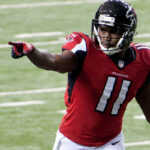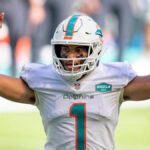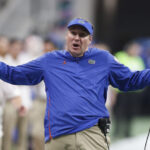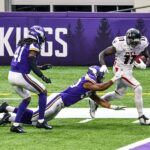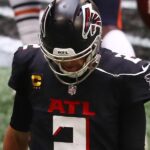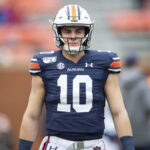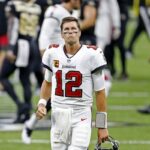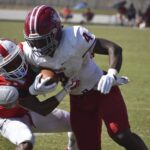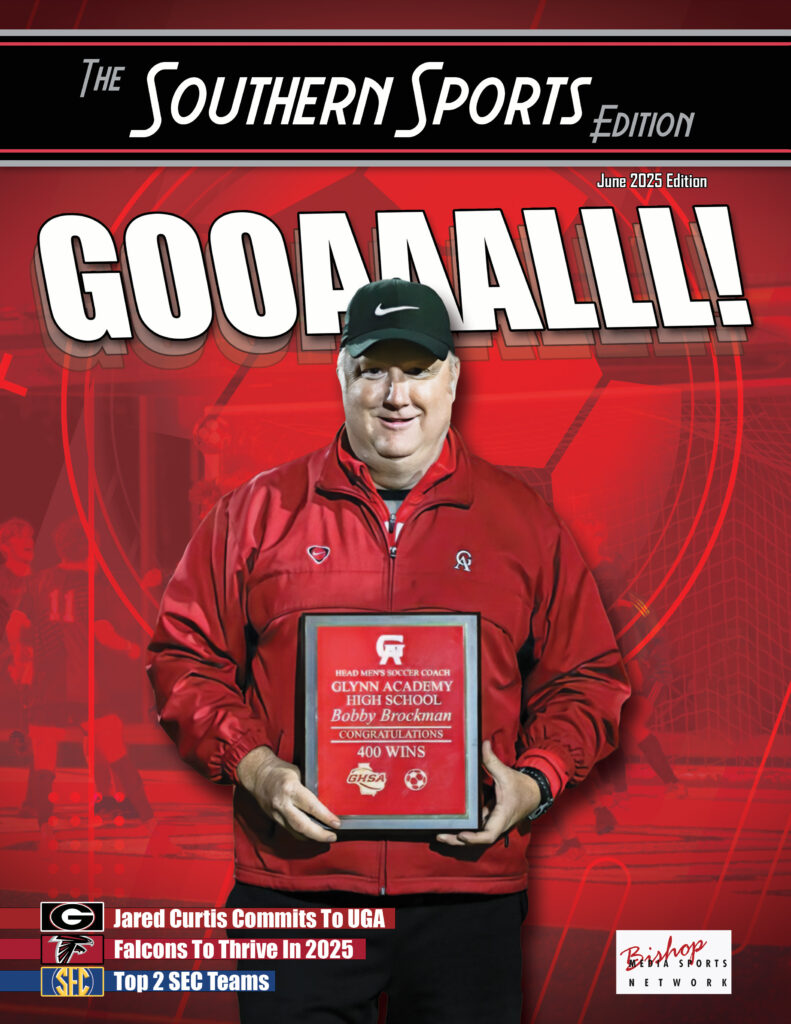Kenneth Harrison
No Sting For Tech?
 By: Kenneth Harrison
By: Kenneth Harrison
TheSouthernSportsEdition.com news services
Geoff Collins is only in his second season at Georgia Tech. It may be too early to say if he was the right hire, but we can check his progress.
As you know he replaced Paul Johnson, who was there for 11 years. He was famous for being the only Power 5 team to run the triple option.
Collins runs a spread offense, so he has a completely different style. Many of the kids on the roster do not have the skillset for that offense.
Johnson was also notorious for not recruiting well. Collins is trying to improve the overall talent on the roster.
Tech’s 2020 recruiting class was ranked 27th nationally and fifth in the ACC.
There were four 4-star recruits in that class. They include quarterback Jeff Sims, running back Jahmyr Gibbs, corner back Miles Brooks and defensive end Jared Ivey.
The 2022 class is currently ranked 32nd and they have two 4-star players in the class. Obviously, it’s not set in stone until signing day so this can change.
Anytime you see Collins he talks about changing the culture and the 404 (Atlanta’s first area code). I’ll be honest, I think it would be better if he spoke more about the game of football.
It seems like he has more style than substance because of that but what do I know.
Let’s take a look at his on-field results. His record at Tech is 6 – 14.
In his first season in 2019 he was 3 – 9 and 2 – 6 in conference play.
He was not expected to have instant success. One score I want to mention so we can compare it to this season is the Clemson game. Last season in Death Valley the Tigers won 52 – 14.
This season they played Clemson at home in the fifth game of the season.
They were steamrolled 73 – 7. I was alarmed by that score because it made me think, how was your team better last season?
In year 2 there should be better talent and more experience playing in your system. I probably oversimplified his progress by just looking at that game.
The Yellow Jackets are 3 – 5 so far in 2020. All three wins are in conference play, so they have more ACC wins than they did last season.
Also, we have to admit during this pandemic that this year is more difficult than normal circumstances.
Speaking of that, Georgia Tech just played their first game after an unexpected four-week layoff. I think this game may have been the turning point for Collins.
They beat Duke 56 – 33 at home. The true freshmen played well. Gibbs had touchdown runs of 61 and 26 yards in the first half before leaving with a hamstring injury.
Sims threw for 3 touchdown passes and ran for 108 yards, setting career highs. Jordan Mason ran for 105 yards.
Three players earned ACC honors after the game. Defensive end Jordan Domineck was named defensive lineman of the week. He had 2 sacks and 2.5 tackles for loss. He had a strip sack in the end zone and recovered the ball for a touchdown.
Sims was rookie of the week and offensive lineman Zach Quinney was co-offensive lineman of the week.
My opinion on Collins has changed and I think he has the team on the right track. He needs one or two more recruiting classes and a normal offseason to get things back on track.
Making The Grade?
 By: Kenneth Harrison
By: Kenneth Harrison
TheSouthernSportsEdition.com news services
Going into the season many experts thought the NFC South would be the toughest division. Now that we’re a little more than halfway through the season let’s take a look at how each team is doing and grade them on their midseason report card.
Tampa Bay: The Buccaneers (6-3) have a lot of hype surrounding them.
As you know they signed the greatest quarterback of all time Tom Brady in the off-season. They also traded to get his favorite target, tight end Rob Gronkowski. They already had Pro Bowl wide receivers Mike Evans and Chris Godwin.
They also signed running back Leonard Fournette and recently acquired future Hall of Fame receiver Antonio Brown.
They are stacked with talent, but the Saints are their kryptonite. They were swept by New Orleans and they did not play well in those games.
This past week they were pummeled 38 – 3 by them. The week before they barely beat the 1-7 New York Giants 25 – 23.
The defense is pretty good, ranked fourth in the league in total defense.
The Bucs are a playoff team but not as good as we expected. Grade: B-.
New Orleans: The Saints (6-2) are flying high. Their tied for the best record in the NFC.
They have the potential to be the top seed and have home field advantage in the playoffs. I will admit that with limited crowd sizes this season due to the pandemic it might not mean as much as it has previously.
Star wide receiver Michael Thomas has missed several games due to a suspension for a fight in practice and a hamstring injury.
In the two games he’s played in he has 8 catches and 68 yards. On the bright side he should be well rested.
The defense is 3rd in the league in total defense, allowing 312 yards and 25 points per game.
New Orleans is the total package. Grade: A.
Atlanta: The Falcons (3-6) got off to another slow start, losing the first five games of the season.
Head Coach Dan Quinn was fired, and Raheem Morris was named the interim head coach.
In those four games they are 3-1. I look at it as too little, too late. Quarterback Matt Ryan is leading the league in passing yards and he’s on his way to another Pro Bowl.
Julio Jones and Calvin Ridley are both on pace to have over a thousand yards and they both have missed games.
Running back Todd Gurley was signed as a free agent and he’s having a decent season.
Gurley is fifth in rushing yards (584) and second in rushing touchdowns (9). The defense is 28th in total defense, allowing 410 YPG and 27.9 PPG.
Grade: D-.
Carolina: The Panthers (3-6) got rid of Cam Newton and signed Teddy Bridgewater to replace him.
The best running back in the NFL, Christian McCaffrey is their only real threat on offense.
McCaffrey injured his ankle Week 2 and missed 6 games before returning Week 9.
They signed former Jets receiver Robby Anderson as a free agent and that was a great move. Anderson is fourth in the league in receiving yards with 751. DJ Moore is also having a good season with 640 receiving yards and 3 TD’s.
The defense is average, ranking 17th in total defense. They give up 362 YPG and 25 PPG.
Grade: D.
Swimming Forward
 By: Kenneth Harrison
By: Kenneth Harrison
TheSouthernSportsEdition.com news services
The Miami Dolphins are having a season better than most people would have expected before the season started.
They were 3 – 3 with starter Ryan Fitzpatrick. They won two consecutive games with him and were second place in the AFC East. Kind of a strange time to bench him for rookie Tua Tagovailoa.
The last time we saw Tagovailoa his final season at Alabama was cut short due to a devastating hip injury.
It was so bad we don’t even factor in the broken nose he also suffered on that play. That injury was so bad it could possibly end his football career so it’s impressive the fifth overall pick has kept battling.
The biggest factor for this QB change is the potential for a high 2021 draft pick.
They traded disgruntled tackle Laremy Tunsil to the Houston Texans and they will have their first-round pick.
The Texans are 1 – 6 and heading for a terrible season. The front office probably wants to find out now if Tua is the answer. If not, they might have an opportunity to Draft Trevor Lawrence or Justin Fields.
Let’s recap Tua’s first start. I didn’t think they did him any favors with letting him play against the Los Angeles Rams.
As you know LA has super star defensive tackle Aaron Donald and corner back Jalen Ramsey. Not very quarterback friendly. Miami shocked us with an upset win, 28 – 17. Delving deeper though we see Tua was not the reason.
Tagovailoa completed 12 of 22 pass attempts for 93 yards and 1 touchdown.
Those sound like 1970’s stats. He also had one fumble. The Rams had 471 total yards and Miami only had 145 yards.
They also had 31 first downs and the Dolphins only had 8. The difference in the game was turnovers and special teams.
Los Angeles had 4 turnovers and Miami had 2. Miami scored a touchdown on a fumble recovery. They also returned a punt for a touchdown.
Here’s some of what Tua had to say about his first start. “I don’t think I played to the standard of what this offense is capable of. There were certain plays where I could have stepped up and made the right throw, made the right decision. But I’ve heard it many times from the guys in the locker room: I’s good that we still came out with the win. Aside from that, thank God we’ve got a good defense, so when we do start to string good plays together, we know that we can be able to make plays and then get the ball back and continue to try to do the same.”
Tua also added, “It was fun just being able to go out there and play a full 60-minute game now. Being that it was my first start in the NFL. We really faced a really good defense. I’m proud of what we’ve got to do offensively, but I do know that there’s still a lot of things we need to correct come Monday. But you can’t say that this defense isn’t really good — they’ve got [Michael] Brockers, they’ve got Aaron Donald, they’ve got [Taylor] Rapp, Jalen Ramsey and all these other guys — and not expect to be stopped a good amount of times. That’s just not realistic.”
Miami is now 4 – 3 but they won’t have a winning record for long. The next game is at Arizona. Kyler Murray is playing very well and living up to being the first overall pick in 2019.
I hope Tua can continue to improve because he’s on a very short leash.
Out Of Sorts
 By: Kenneth Harrison
By: Kenneth Harrison
TheSouthernSportsEdition.com news services
The Florida Gators might be the team that embodies this strange 2020 season the best.
The Gators stopped all football activities Oct. 13 after a coronavirus outbreak spread through the team.
Head coach Dan Mullen and two assistants also tested positive, with at least 26 players positive since that time.
“Everybody’s really excited to get back to football and get back playing,” Mullen said. “I think that’s something that is big within the team right now is that ability to get back out on the field.
This year’s been a unique year like no other, with stops and starts and different schedules. Our guys have handled everything extremely well throughout the year. I think they’re going to be really excited to get back out there on the practice field.
“I don’t expect us to come out there and have our sharpest, most crisp practice of the year, but I expect us to have great energy, excitement and enthusiasm to be back out there to get going as we build up to Saturday.”
During the two-week quarantine period Florida had to postpone games against LSU and Mizzou. That was much needed time to gain experience and try to get better against outside competition. They also were not able to work out during this time.
Through the first three games quarterback Kyle Trask looked like a Heisman Trophy frontrunner. He’s thrown for 996 yards, 14 touchdowns, 1 interception while completing 72% of his passes.
His favorite target is another Kyle, tight end Kyle Pitts. Pitts has 17 receptions, 274 yards and 7 TD’s. UF looked like one of the best offenses in the nation.
The Gators were ranked No. 4 in the last game they played at Texas A&M. They were upset by the Aggies and lost 41 – 38. I think the team’s confidence was shaken after that loss then they have not had the opportunity to build it back since the last two games were postponed.
The defense has been atrocious. They’ve given up an average of 495 yards per game and 33 PPG. I don’t think that’s something they can flip a switch and fix quickly.
Before the teams COVID outbreak they had one advantage going into the Georgia game, which was a bye week. That week was used to reschedule the Mizzou game.
No matter how hard they try, game shape can only be worked on by playing games. I think the team will struggle in this game. Also, if there are any injuries, they will be in jeopardy of missing the following game against UGA.
Florida will be at a disadvantage going into the November 7th showdown. Their defense can’t stop anybody without any of the things we talked about factored in.
At this point we do not know what we are going to get out of them. The offense might be out of sync now with the layoff.
Lift Off
 By: Kenneth Harrison
By: Kenneth Harrison
TheSouthernSportsEdition.com news services
The Atlanta Falcons finally won a game.
Dan Quinn was finally put out of his misery after starting the season 0 – 5. Defensive coordinator Raheem Morris has taken over as interim head coach. You may remember when he was head coach for Tampa Bay from 2009 – 2011.
Julio Jones returned after missing the last game and a half with a hamstring injury. His return helped spark the offense.
Jones finished with 8 catches for 137 yards and 2 touchdowns, including a 40-yarder off a broken play that helped put the game out of reach. The Falcons won 40 – 23 on the road at U.S. Bank Stadium in Minneapolis.
It was Jones’ 57th career game with at least 100 receiving yards, which is the most among active players and the fourth-most in NFL history. Jerry Rice (76), Randy Moss (64) and Marvin Harrison (59) are the only players ahead of him. They are all in the Pro Football Hall of Fame, so he’s in great company.
“At the end of the day, I felt great coming into this game,” Jones said. “No complaints. No hamstring injury issues. No tightness and things like that to prevent me from bring who I want to be on game day.”
The Falcons scored on 8 of 12 possessions, with one kneel down at the end of the game.
Matt Ryan completed 30 of 40 passes for 371 yards and four touchdowns, with an average yards per attempt of 9.3.
“I think that’s always the mindset I’ve had, to go out there and play my best every week,” Ryan said. “We have to earn everything we get in this profession. I don’t think it really changed my approach or anything. I believe I have a really good process and a way to get ready week in and week out. I trust that process.”
Atlanta jumped on the Vikings early and went into halftime with a 20 – 0 lead. As you know they crumbled in the second half and dropped second half leads under Quinn. I thought they were doomed because the Falcons have shown us, they don’t play well with a lead. I give Morris credit because they played well in the second half.
They recovered two onside kicks. It was the opposite of the debacle in Dallas when the kickoff team sat back and waited for the ball to roll 10 yards. On both onside kicks they attacked the ball and caught it as it came to them.
The defense had 3 interceptions on the season coming into this game. They forced Kirk Cousins to throw 3 picks in this game. They did allow rookie wide receiver Justin Jefferson 9 receptions, 166 yards and 2 touchdowns. I have him on my fantasy team but for some reason I had him on the bench.
The New York Giants also got their first win of the season yesterday. That leaves the Jets as the only winless team in the league. I bring that up because they have the work record and they are front runners to pick Trevor Lawrence first in the 2021 draft.
Atlanta is not a good team, but I think they are on track to get a few more meaningless wins that will make them pick lower in the draft.
The next two games are home against Detroit then at Carolina for Thursday Night Football. Those are games that are winnable.
Who knows, they might be in the playoff hunt if they can win those games then beat Denver.
Collapsible
 By: Kenneth Harrison
By: Kenneth Harrison
TheSouthernSportsEdition.com news services
Some things in life are guarantees. For instance, death and taxes are something we all know is inevitable. Well in the sports world we can add a new guarantee; the Atlanta Falcons blowing a second half lead.
Dan Quinn took over as head coach before the 2015 season and he had his most successful season early on. In his second season the Falcons were 11 – 5 and advanced to Super Bowl LI.
As you all know they held a 28 – 3 lead over New England with 3 minutes left in the third quarter.
They collapsed and lost the game. I believe all of the momentum was sucked out of the team at that moment. They were 10 – 6 the following year and made a playoff appearance. The last two seasons, they were 7 – 9.
Week 2 at Dallas looked promising. The Falcons were flying high and jumped out to a 20 – 0 lead over the Cowboys. They went to halftime up 29 – 10. With 5 minutes left in the game they were up by 15. I’m sure it didn’t cross anyone’s mind that the game was in jeopardy.
Well, the Atlanta defense can make just about anybody look good. When they face a player with talent it only gets magnified.
Dak Prescott became the first quarterback in the NFL’s 101-year history to pass for over 400 yards and rush for 3 touchdowns.
The Cowboys recovered an onside kick where the Falcons players looked at the ball and inexplicably just waited for it to roll at least 10 yards. The Cowboys recovered it and scored to give Dallas a 40 – 39 win.
Surely that kind of debacle can’t take place again under Quinn’s watch.
Enter Week 3, a home game against Chicago. Atlanta has a 16-point fourth quarter lead with 6 minutes remaining in the game.
Chicago replaced a struggling Mitch Trubisky with Nick Foles. Like something out of a movie Foles threw for 3 touchdowns and the Bears won, 30 -26.
What did Dan Quinn have to say after the loss? “Obviously really two disappointing endings over the last two weeks. I told you earlier we’ve got to find our way to finish. We’ll hit the road a week from tomorrow and make sure that result has to be different at the end of the game. That’s where we’re at.”
Now the team is 0 – 3 and Quinn’s overall record is 43 – 40. That seems very mediocre to me.
Quinn was the defensive coordinator for the Seattle Seahawks before coming to Atlanta.
The Falcons defense has never been good with him as the coach.
Currently their 27th in total defense, giving up an average of 419 yards per game. The next game will be a Monday night showdown with 3 – 0 Green Bay.
It would be a major upset for Atlanta to win this game.
On the bright side Atlanta won’t get an opportunity to blow a fourth quarter lead in this game.
The Packers will win convincingly. Then we all have to wonder when will Arthur Blank remove Quinn as the coach. Right now, it looks like that will never happen.
SEC Saturday
 By: Kenneth Harrison
By: Kenneth Harrison
TheSouthernSportsEdition.com news services
We are two weeks into the 2020 college football season.
As you know everything has been altered due to the global pandemic. The SEC begins the season this Saturday and we are going to preview these games.
#5 Florida @ Ole Miss: Kyle Trask enters the season as the starting QB for the Gators. He was given the job in the Kentucky game after Feleipe Franks got hurt.
He led Florida to a comeback win and he never looked back. I expect him to be much better and have more confidence this season.
Ole Miss was 4-8 in 2019 so we don’t expect much from them.
QB John Rhys Plumlee is the epitome of a dual threat. He rushed for 1,023 yards and 12 touchdowns last year, while averaging 6.6 yards per carry.
The Gators should still win by 14 points.
#23 Kentucky @ #8 Auburn: This season home teams won’t have the advantage of crowd noise.
That will not make a difference for Auburn though. Last season true freshman quarterback Bo Nix passed for 2,542 yards, 16 scores and 6 interceptions.
He also ran for 313 yards and 7 TD’s. As expected, he made some head scratching plays due to his inexperience.
He should be much more consistent and protect the football better going into his sophomore season.
Kentucky has been a solid team over the last few years. The Wildcats were 8-5 in 2019. In a battle of jungle cats that Joe Exotic would appreciate, I give the edge to the Tigers by 10 points.
Miss St @ #6 LSU: The Tigers are the defending champs, but they lost so much talent from that team.
Heisman Trophy winning QB Joe Burrow was the top pick in the draft. Running back Clyde Edwards-Helaire was also a first-round pick.
The elite programs reload with talent, but I think that’s unrealistic for LSU.
The Bulldogs senior RB Kylin Hill ran for 1,350 yards and 10 scores in 2019. I think this will be a close game but LSU should win by a touchdown.
#4 Georgia @ Arkansas: UGA had Wake Forest transfer QB Jamie Newman as the expected starter but he opted out of the season a few weeks ago.
USC transfer JT Daniels is now the starter and I think he’ll do well. RB D’Andre Swift left for the NFL but Zamir White, James Cook and Kenny McIntosh will step up.
Arkansas is a bad football team, going 2-10 last year and winless in conference games.
The lone bright spot is Last Chance U star Rakeem Boyd who ran for 1,133 yards and 8 scores in 2019.
The Hogs have added Florida transfer quarterback Feleipe Franks and he easily won the starting job. Yikes. UGA wins by 27 and Franks will assist with three turnovers.
#2 Alabama @ Mizzou: I hate to say it but Missouri has no chance.
Mac Jones has been named the starter for Bama. The Crimson Tide have too much talent at every position and this will be a blow out.
Vanderbilt @ #10 Texas A&M: I think the Aggies are ranked way too high, especially with Kellen Mond at quarterback.
That won’t matter in this game because Vandy is outmatched.
That’s the case for the Commodores in the majority of their conference games. Give me A&M by 20 points.
#16 Tennessee @ South Carolina: The Vols got off to a rocky start (1-4) last year but finished 8-5 and won the Gator Bowl.
South Carolina battled injuries to quarterbacks last season. I think the Gamecocks pull the upset in Week 1.
Down South
 By: Kenneth Harrison
By: Kenneth Harrison
TheSouthernSportsEdition.com news services
Week 1 of the NFL season is in the books. Let’s take a look at what happened around the NFC South after the first week of games.
Seattle 38, Atlanta 25: The Falcons defense looked just as bad as they have the last few seasons. Russell Wilson completed 31 of 35 passes for 322 yards and 4 touchdowns.
He also had three runs for a team-high 29 yards rushing. Atlanta sacked Wilson 3 times but that did not slow him down.
Matt Ryan threw for 450 yards, 2 touchdowns and an interception.
Julio Jones, Calvin Ridley and Russell Gage each had 9 receptions for over 100 yards.
In Todd Gurley’s first game as a Falcon he rushed 14 times for 56 yards and a TD.
Atlanta outgained Seattle 506 yards to 383 but came up short all four times they tried to convert on fourth down.
The one good thing for the Falcons is Ryan surpassed John Elway for ninth on the NFL career passing yardage list.
Las Vegas 34, Carolina 30: Matt Rhule made his coaching debut as the Panthers head coach.
They had the best defense in the NFL just a few seasons ago, now they need all the help they can get.
The Raiders offense did whatever they wanted.
Second year running back Josh Jacobs rushed for 93 yards and 3 touchdowns.
Derek Carr threw for 239 yards and a score.
This was the first game for the Raiders since moving from Oakland to Las Vegas. Gruden didn’t hold back on praising Jacobs.
“That was a little bit like Walter Payton used to play,” Gruden said. “It was hot as hell. He got beat up early. He insisted on coming back and he insisted on getting the ball as a runner and receiver. He is special. He deserves some national attention — and I hope you give it to him.”
This was Teddy Bridgewater’s first game as the Panthers QB.
He had a solid game, completing 22 of 34 passes for 270 yards and a touchdown.
Former New York Jets receiver Robby Anderson also made his Carolina debut and played well. He had 6 receptions for 115 yards and a touchdown.
Of course, Christian McCaffrey had another great game. He ran for 96 yards and 2 touchdowns and he had 38 yards receiving.
New Orleans 34. Tampa Bay 23: This was the most anticipated game of the day. We all know Tom Brady left New England this offseason to become a Buccaneer.
He has a ton of offensive weapons. The Saints also feature a geriatric quarterback surrounded by playmakers.
This was the first game featuring two starting quarterbacks in their forties and they played like it.
The game started good for Brady. He rushed for a touchdown to give Tampa an early 7-0 lead.
It was downhill from there. He threw two picks and one of them was returned for a touchdown. Jameis Winston had to see himself in Brady as he watched from the Saints sideline.
“I made some just bad, terrible turnovers,” Brady said. “I obviously have got to do a lot better job.”
Drew Brees only threw for 160 yards and 2 TD’s. Alvin Kamara had a rushing and receiving score.
Surprisingly Michael Thomas only had 3 catches for 17 yards.
Corky Kell Kickoff
 By: Kenneth Harrison
By: Kenneth Harrison
TheSouthernSportsEdition.com news services
The high school football season kicked off last week. I’m going to recap the Corky Kell Classic, which features some of the best teams around the state.
Greater Atlanta Christian 20, Denmark 0: Greater Atlanta Christian is ranked sixth in class 3A.
The defense had six interceptions, including a streak of five consecutive on five Denmark possessions. Senior cornerback, Saiku White had three of the interceptions, and Josh Williamson, Luke Field and Joseph Rose each had one.
The Spartans had a solid performance from quarterback Deymon Flemming, who was 15-of-28 for 132 yards and two touchdowns.
This was the final game of the Corky Kell Classic.
Lowndes 51, Archer 21: Lowndes is ranked second in class 7A and No. 9 nationally.
The Vikings are led by 4-star quarterback Jacurri Brown.
He went down with an apparent leg injury midway through the second quarter. The game was tied at 7.
He had a short breather and got his ankle taped before returning. He threw for 164 yards and two touchdowns, completing 50% of his passes. He also had a rushing touchdown.
Archer is ranked No. 7 in class 7A so this is a very impressive win.
Collins Hill 46, Carrolton 24: This was a matchup between 7A and 6A teams.
Carrolton is No. 4 in the state in 6A but they were no match for the Eagles.
Collins Hill forced three interceptions.
They have a junior four-star quarterback, Sam Horn. He’s the No. 4 pro-style quarterback in the country for the junior class.
He was 27-of-40 passing for 364 yards, 3 touchdowns and lead an offense that gained 509 total yards of on 66 plays.
St. Pius X 38, Flower Branch 28: The Golden Lions ran 62 offensive plays and gained 430 yards. 398 yards of that offensive production came on the ground as Pius averaged seven yards per carry on 57 rushes.
Mason Benefield finished with seven carries for 46 yards and two touchdowns.
Shug Bentley had seven carries for 59 yards and a touchdown.
Paul Quigley had four carries for 38 yards and a touchdown.
Dennis O’Shea was 1-of-5 passing for 32 yards and a touchdown.
Walton 35, Kell 28: This was a battle between Cobb County schools.
The Raiders trailed 28-16 in the third quarter before making a comeback.
Zak Rozsman was 9-of-21 passing for 130 yards and a touchdown. He also rushed nine times for 49 yards and a touchdown.
Freshman quarterback Jeremy Hecklinski was 3-for-3 for 58 yards. Braylen Stokes had 15 carries for 159 yards and two touchdowns.
Kenny Djaha had nine carries for 76 yards and three receptions for 76 yards and a touchdown.
North Gwinnett 35. McEachern 7: The Bulldogs are led by four-star Clemson-commit Barrett Carter. The linebacker finished with a 7-yard touchdown run from the wildcat formation, a 79-yard interception return for a touchdown and a team-leading 10 tackles, 2.5 for a loss.
Brookwood 40, Dacula 34: This game went to four overtimes before the Broncos scored on a 1-yard touchdown run by Alexander Diggs.
Brookwood quarterback Dylan Lonergan was 28-of-43 passing for 433 yards and four touchdowns.
Denylon Morrissette had 12 receptions for 215 yards and three touchdowns.
West Forsyth 42, Mays 6: Coach Dave Svehla got the win in his first game.
He coached at Etowah from 2012-19 and had a 49-41 record there.
The Wolverines led 35-0 at halftime.
Daba Fofana carried the ball 16 times for 110 yards and two touchdowns with one touchdown reception.
Cherokee 38, Carver-Atlanta 12: The Warriors dominated and Keith Adams Jr. ran for 180 yards and 2 touchdowns.
Throw Me The Ball
 By: Kenneth Harrison
By: Kenneth Harrison
TheSouthernSportsEdition.com news services
The NFC South has some of the most talented players in the NFL. I think most people would agree the strength of the division is on offense.
Let’s take a look at the top five wide receivers in the division.
# 1 Michael Thomas (New Orleans): I have to admit I’m surprised at this ranking. I know he’s a very good player but he doesn’t wow you with athleticism.
In 2019 he led the league in receptions (149) and receiving yards (1,725). He was tied for second in receiving touchdowns with nine.
He’s so far ahead of the guys in second place.
Christian McCaffrey is second in receptions with 116. That’s extremely impressive considering he’s a running back but you get the point.
Thomas has been in the NFL since 2016 and his stats have gotten better every year. His worst season was his rookie year and he had 1,137 yards and 9 TD’s.
# 2 Julio Jones (Atlanta): Julio was sixth in the league in receptions (99) and second in yards (1,394).
Jones has the rare combination of size and speed. I think he’s a more talented player than Thomas but I’m basing this on numbers. He had 21 plays of 20+ yards.
Jones has been the model of consistency since entering the league in 2011. He’s been to the Pro Bowl seven times in his nine seasons.
He has two seasons with under a thousand yards and his season was cut short due to injury both times. Julio is an outstanding player but the Falcons normally have other weapons on offense so he’s not always the focal point.
# 3 Chris Godwin (Tampa Bay): Godwin had a breakout year in his third season in 2019.
In his first two years he had 93 catches, 1,367 yards and 8 touchdowns.
Last season he was third in receiving yards (1,333) and tied for second with Michael Thomas for receiving touchdowns with 9.
What makes it more impressive is he missed two games and he did this with only 86 catches. Godwin had 25 plays that were 20+ yards so he’s a big play threat.
# 4 Mike Evans (Tampa Bay): If this list were based on total career Evans would have been one spot higher.
What’s impressive is Evans has been performing well for the Buccaneers with Jameis Winston primarily at quarterback. He’s also had Ryan Fitzpatrick throwing him passes. Having very inconsistent quarterbacks is why he’s never had 100 receptions in a season. The closest he came was 96 catches in 2016.
In 2019 he only had 67 receptions but he had 1,157 yards and 8 touchdowns.
Evans is a big, 6’5 receiver so we don’t think of him as a big play threat, but he is. He averaged 17.3 yards per catch and he had 17 plays of 20 or more yards.
# 5 D.J. Moore (Carolina): He drastically improved in his second season.
As a rookie in 2018 he had 55 receptions, 788 yards and two TD’s.
In 2019 he had 87 catches, 1,175 yards and 4 touchdowns. The addition of Teddy Bridgewater should help him improve in 2020.



